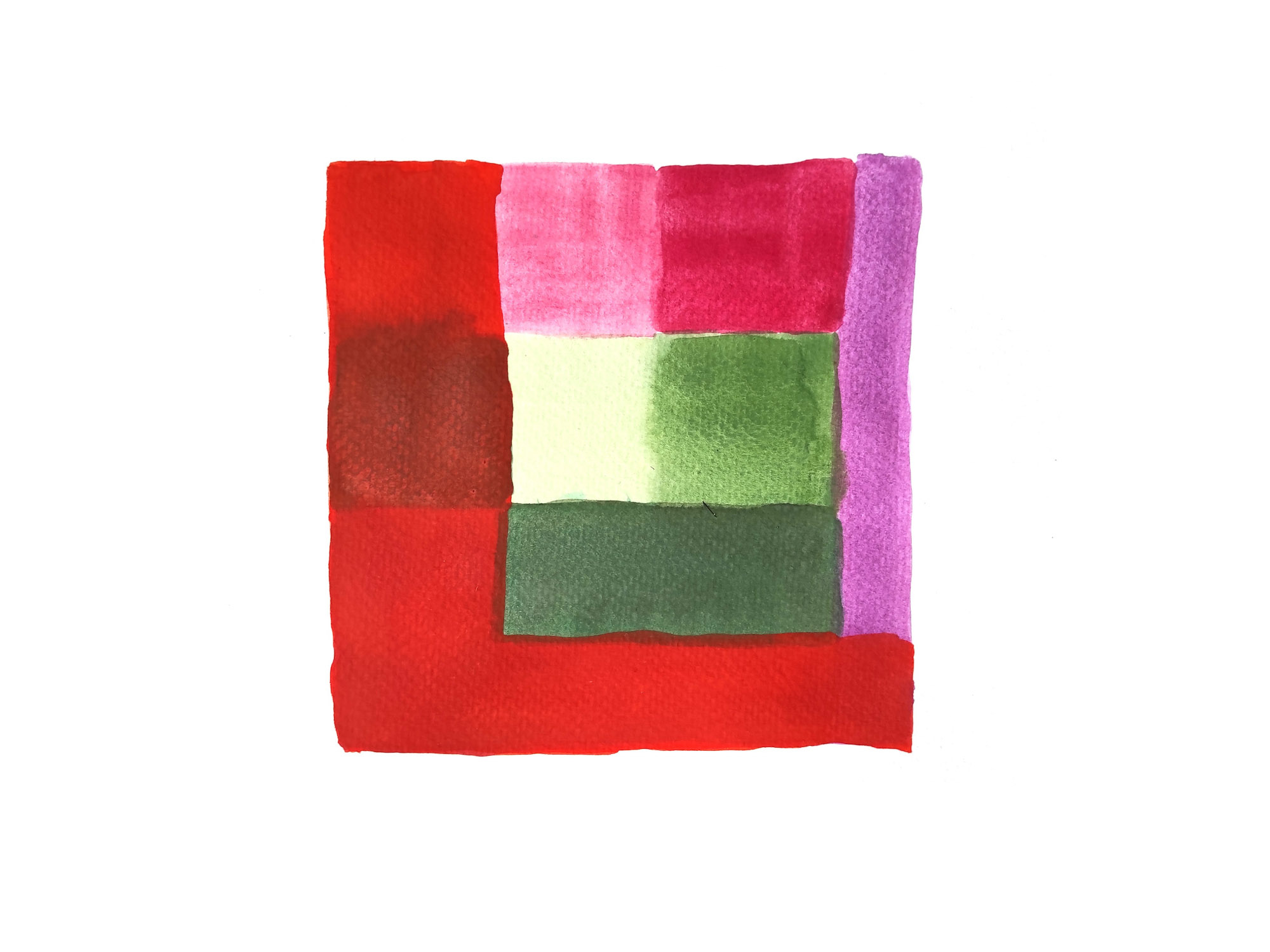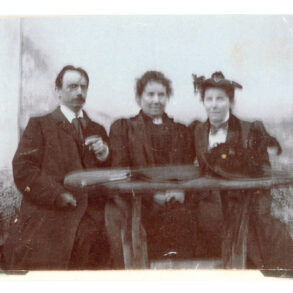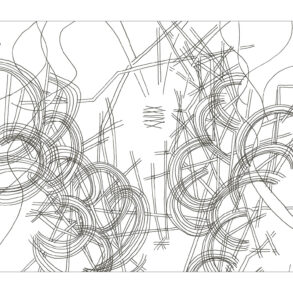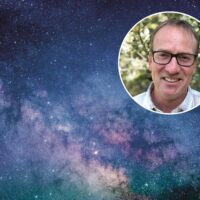Communities need playful encounters not as a luxury but for their inner health. In playing, we open up and make ourselves vulnerable and accessible. This creates an authenticity that frees us from legacy burdens or expectations, hierarchies, and ideas. This is how you bring the relationship into the present. Sonja Zausch talks about her collaborative work with people with or without assistance needs and about her own learning process. The questions were asked by Franka Henn.
Your path began with an apprenticeship as a baker, then as a stage dancer, and later as a eurythmist. This opened up the field of curative education and even the social area. Who has inspired you in your life?
The first person I can think of is a colleague from the Camphill movement, whom I only met when I was 34 and started working in curative education. Through him, I felt that I really wanted to go deeper with anthroposophy and not be deterred by what occasionally irritates me about it. In the past, I often had the feeling: Oh, I have to know a lot to play along. But he gave me the attitude: You are in the right place wherever you are. Have this trust that there is a reason that you are there.
Nevertheless, I ask myself again and again: Am I right or wrong here? But it carries me to say at the bottom of my heart: Yes, I can say something about this because I’m just here now. The same goes for dancing. I danced and danced and danced and danced, and I never had the plan to become a dancer. Pina Bausch, the Wuppertal Dance Theatre, was a great role model for me because I simply experienced honesty with the topics from life there. Everything is told: pain, joy, sorrow, blood, death, love, and sex.
Is that an important motive for you? That we completely ‹get through,› together with life, the lifeblood, that we really speak out and do not hold back or ‹wisdomly› dampen it?
Yes, I have a big concern for authenticity and the feeling of staying close to myself. For me, alienation is a big issue. Maybe that’s why I ended up in this work with people needing assistance. What does it mean to be able to show myself authentically, and what happens when I experience myself alienated? I do that quite often. Then I’m in my head and have something in mind. Then I walk around and lose contact with this inner, original impulse and am only about to be on the road with an opinion or defense. In the beginning, I had such a nice picture of what it was all about. Then I have to row back in the brain to return to my heart.
And then how do you row back? How, then, does this inner movement or the authentic start again?

My method is what is now called ‹embodiment›, i.e., reconnection to one’s own body through breathing. An exercise I love to do and recommend to every person is to go into a body meditation and feel: How does the inner surface of my skin feel? This allows me to locate myself again, which is not self-centered or selfish. It’s about feeling the internal contact with yourself. I think we are slowly getting to the point where the body also receives more attention in anthroposophy. There is this slogan in eurythmy: ‹My body is my instrument.› But the body is even more. It is also my emotional and mental starting point.
There must be a space to accept where I can show myself with my vulnerability and clumsiness.
This is also very relevant to society because the difficulty is everywhere to feel into oneself, to stay with oneself, to create an authentic expression at the moment with the people or situations that are there. The openness and simultaneous activity that requires what would be the basis for a good coexistence challenges every person I know. At the same time, there is still something ‹soft› attached to this requirement of oneself, which is often dismissed or ridiculed. How do you deal with such devaluation when you lead exercises at conferences or sit on governing bodies?
I really need to know what I want to achieve. I have to examine this very profoundly first. Otherwise, I prefer to shut up. Here in Germany, I accompany processes for the emergence of an inclusive community. We organized a ‹Future Workshop› and we invited the stakeholders of the municipality together with the people with assistance needs. A small group of 20 people. We brought red heart balloons with us, and the participants had to walk through the room in pairs, always a person with and without assistance holding this balloon between them. You were once holding the balloon between you on your stomach, once on your back, once on your head. You can say that this is for children’s birthday parties. But you can also ask afterward, what did I experience, feel, and get to know from the other? What was that relationship quality, and what do I need it for? We have a method or a way to get into the lightness and conversation with each other.
This game remained the central experience of the meeting, even in retrospect. Because we experienced what the artistic potential allows us to do. But I need to know why I bring such an exercise with me and, what I want with it, to what extent it serves the goal of the meeting. Otherwise, it will be dismissed or misunderstood as a ‹small loose up exercise.›
Is this also the bridge from creating dance and eurythmy to curative education for you?

To this day, I am still carried by the idea that the educational processes that I do on the artistic level actually all serve self-awareness. How I can design these processes in such a way that they serve everyday professional life actually became my topic. That’s how I started vocational training. Even though I did eurythmy in social therapy with people in need of assistance, I never considered it therapeutically or pedagogically, but always as a self-development. How do we develop together in such an exercise so I can take up my actual work with a different quality afterward? Effectiveness is an important point.
We engage in the common process, away from performance and result orientation.
On the one hand, the effect is also the exciting thing about moving. This is life: everything moves on every level all the time, which always means an effect. On the other hand, there is always motivation in movement: What brings me internally to an action? Can you perhaps say what qualities or skills you challenge or promote in community self-development processes?
This continues from the beginning. How can I show myself authentically as a person? The body is merciless. It does not pretend. If I am equipped with a certain physicality, I have to live with it. I can lose a little weight, gain a little weight, and put on some muscle. That is, the body is always an encounter with something quite pure. I would say I actually put people in very vulnerable situations. This requires a lot of mindfulness during the exercises. I always have to remember: We are taking tiny steps here because I am aware that what I want from you here works on the level of vulnerability. There must be a space to accept where I can show myself with my vulnerability and clumsiness. A classic example: I also sometimes work with people from the management level and meet many skillful and clever men there. Then we do something with left and right, and their skill suddenly stops. For this, we need appreciation, also towards this visible irritation. Because nowadays, it seems difficult to let yourself be unsettled. I’m really humbled when I create a space for vulnerability and insecurity.
In 2017, together with three other authors, you wrote a practical book on eurythmy in adult education: ‹Scope for the Unexpected›. Are insecurity and vulnerability the central motives?
I wasn’t there yet. I wrote a part about working with people needing assistance and people with psychiatric disorders. I have worked with clients, staff, and groups. And for the book, I built up a methodology-didactics part. But how did I get to the point of vulnerability and insecurity? For this, I have to thank the people with assistance needs.

At the time, I also thought that you have to find the right thing for everyone and that, in the end, everything comes together. Now I would say we have to take everyone with us in the process. The great thing is that it makes us all slower, calmer, and more mindful. We get involved in the collaborative process, and in the end, it actually does everyone pretty good. See the balloon game. Away from performance and result orientation. I also notice this in my practical work preparation with communities. If someone says to me: We only have half an hour, can you offer something for half an hour? Then I say: Yes, we do something in the half-hour, and where we are after the half-hour, we reflect. I don’t think anymore: Oh dear, what can we do in half an hour and where do we want to be? The process is determined by those involved, not me. And that’s another big paradigm shift when the leader says: Find out what your common pace is. It’s not that easy.
At the beginning of October, the international conference for curative education and social therapy, ‹Health on all your ways› will take place in Dornach, which you have also subtitled ‹Vulnerability – Love – Balance›. It has been designed in many movable and moving formats. Among other things, there will also be a cinematic contribution, which you wanted to tell briefly.
Yes, I would like to refer to the author Pascale Karlin. She is Swiss, lives in the Jura, and is in her early 50s. She was born with autism, has made an impressive development, and has published two books about it with Info3-Verlag. In her second book, she tells the story of how she goes to a monastery and meets a monk at the door. She wants to enter this church building, but the monk tells her she can’t enter because there’s a bird in it. She asks what the monks would do with the bird. He says they tried to get him out with the broom. She replies that you can’t get him out with the broom and have to talk to him. And she goes into the church and somehow takes this bird into her interior, and the bird flies out. She was so disappointed that the monk did not know that you could talk to the bird because whoever talks to God must also know how to speak to a bird.
I find this picture so brilliant because it shows how people want to scare something away. This is also the case in conventional ‹disability assistance.› In the conventional way of thinking, you want to ‹remove something› because you have a normative understanding of something instead of going into the relationship. Pascale Karlin will also come to our conference and lead a working group. She recently made the film ‹Living Dialogue›, in which she herself speaks alone, and her son filmed it. It’s about the inner workings of autism. She herself is in front of the camera all the time. We will show this film at the conference.
The Anthroposophic Council for Inclusive Social Development holds a major international conference every two years, and we wanted to shed more light on the interdisciplinary fields we work with. First, we had the social sciences four years ago, then the educational sciences two years ago, and now the health topic. With ‹love›, ‹vulnerability›, and ‹balance›, we have put three concepts for health development into the room. With them, we want to dedicate ourselves to the question of individual, community, and earthly health.
The main motive I perceived in this conversation was to orient myself on perception – to want to act without wanting to achieve anything. Is that right?
I want to add the word ‹need›. Not only does the perception count but also the listening. What is the need of the people we want to involve? And what is the ability of the other person? So we immediately come into common, I get away from myself immediately. So, perception also towards the needs.
Podcast The conversation can be listened to in more detail as a podcast on the website of the Goetheanum and most platforms.
Event The international conference for curative education and social therapy, ‹Health in all your ways – vulnerability, love, balance›, will take place in Dornach from October 5 to 9, organized and supported by the Anthroposophic Council for Inclusive Social Development, which works internationally for consulting and networking.
Pictures The harmony of complementary colors, Sonja Crone. – Translation: Monika Werner









